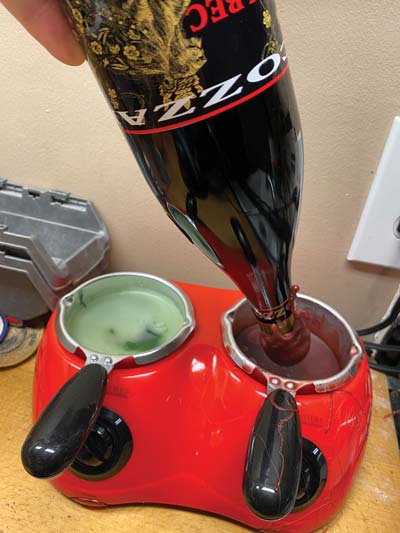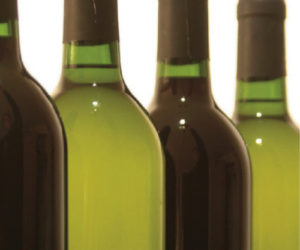Virtually all professional winemakers finish the tops of their wine bottles with a capsule — whether it’s composed of PVC, tin, polylaminate, aluminum, or wax. The capsule is thought to help protect the cork from mycobacteria. I personally love the look of capsules as it makes the presentation of a homemade bottle of wine more appealing aesthetically. But it is important to understand the differences of what they are and how to apply them.
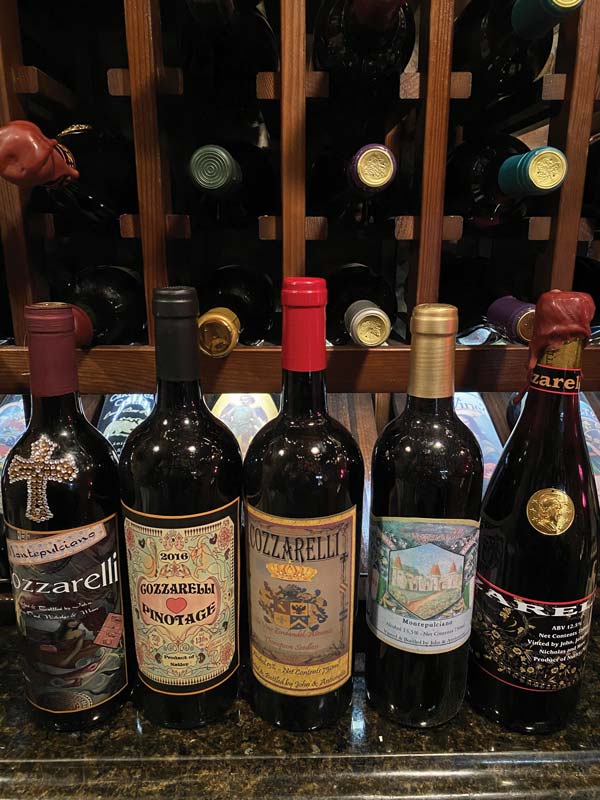
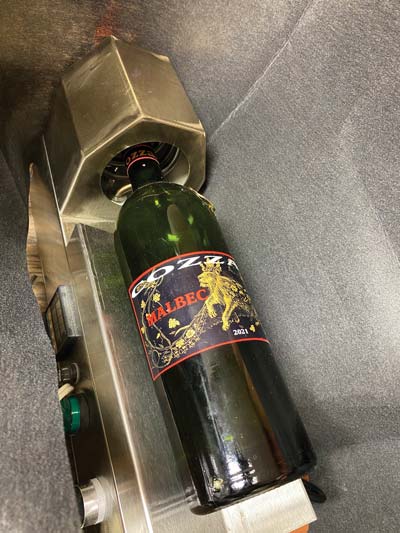
PVC, or polyvinyl chloride, is utilized by the home winemaker and comes in an array of colors. In our winemaking setup, we actually have a cabinet that houses all different colors of PVC shrink capsules. This becomes our palette when we apply our label and pick an appropriate colored capsule to finish the work. PVC is the least expensive for both commercial and home winemakers, but it is one of the worst plastics from an environmental health perspective. It can pose major health hazards in the manufacturing process, and disposal (look no further than the train derailment in East Palestine, Ohio). PVC capsules can be applied by three different methods: Blow dryer, a pot of boiling water, or using a heat tunnel (my preferred method).
Tin capsules bring a very elegant and expensive look to your wine bottle. Tin capsules require a specific piece of equipment called a spinner, which is common in the commercial winemaking world. We have a single spinner for the home winemaker. One must be careful when handling a tin capsule as there is a sharp edge to them.
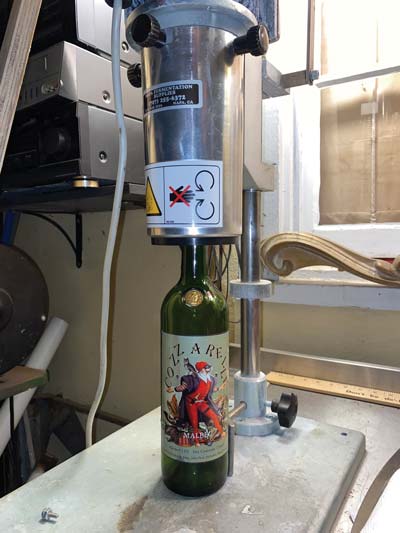
Polylaminate capsules are comprised of a three-layer aluminum-polyethylene-aluminum seamed skirt and aluminum top disc. “Polylams” (for short) are not approved by the FDA for direct contact with food but are a secondary, decorative closure, and not intended to contact wine or other beverages. Polylams have many of the characteristics of tin with a reduced price and are the most requested closure and are suitable for any type of wine, including both premium and homemade wines. If the winemaker wants to upscale his bottle of wine to appear nicer, polylam is an excellent choice and applied with a spinner.
The aluminum capsule offers the form and function of tin, but at a more affordable price, similar to the price of polylam capsules. Aluminum capsules are more sustainable because they are more environmentally friendly and can be recycled. Like tin and polylam capsules, an aluminum capsule is applied with a spinner.
Back when the only choice in high-end wine packaging was amphorae, wax was the seal of choice, often embossed with a signet. The wax is comprised of rosin, paraffin wax, or microcrystalline wax, and many different colors are available. Some wineries still use wax, but the cost is expensive and is very time consuming for the application. Hand-dipping wine bottle sealing wax accomplishes a distinct look on the bottle, provides a positive seal, and is an environmentally conscious product as opposed to using the traditional products such as foil or metal capsules. The winemaker wax is supplied either in one-pound bars or bags of wax chips. I prefer the chips, which melt faster. The wax capsule helps you achieve a tough, moisture-resistant coating that preserves freshness, flavor, and fragrance in your wines. Despite the additional time for the home winemaker, the wax capsule look is distinct.
